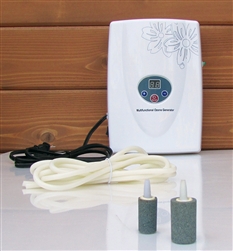Participant: I was wondering. I know that on my crowns that amalgam was removed but I know at least the last one I got, all of it wasn’t because when I saw the tooth, when they took the temporary off, I could see little spots.
Do you suggest pulling off all those old crowns and getting every little spot and then also on the crowns that have the porcelain fused to the base metal, do you suggest having those replaced or if you’re in good health, that’s fine to leave them?
Daniel Vinograd: Do you have an option or you have a way to find out what metal was used on those crowns? If you can find out, unless it was titanium, and you have some kind of a health challenge, I would get them replaced by BruxZir crowns.
The first part of the question, often the amalgam, when you remove an amalgam, as you saw in one of the – you get decay underneath and you get something else which is called amalgam tattooing.
So the amalgam will actually stain the tooth. In our office what we do is we actually have a vegetable dye that we place that will actually mark for us the actual decay and we remove that but we don’t actually remove the tattooed tooth because the silver is not a problem.
People use colloidal silver all the time and it’s a well-known antibacterial that people use quite successfully. So the silver is not the problem. If what you’re seeing is the staining of the tooth by the amalgam, that is not a problem. However, if the actual physical amalgam piece was left, I would have that removed.
[Crosstalk]
Facilitator: … was how would you know if they were careful?
Daniel Vinograd: Yeah. If you have a good rapport with your dentist. It’s all about the rapport with your dentist. A lot of the dentists are great, great people. They’re thorough, whatever, but they sometimes don’t have the consciousness of saying, “Well I leave a little piece of amalgam. It’s not a problem,” because they don’t understand what the side effects, the harmful effects of that is.
But if you have a good rapport with your dentist, I would have a conversation to find out. Did you remove that? I’m concerned and ultimately if a metal that is not titanium was used, you might want to get them taken out and see what’s underneath anyway.
Participant: If the pockets of the gums are three millimeters or less, can you brush with baking soda and kill the bacteria? Do you find that that’s effective?
Daniel Vinograd: Yeah, you can use baking soda. Really truly what you use is not so significant. I actually have my patients brush with a soft toothbrush and water. That’s it when it comes to the gums. Afterwards, when they’re done, I say, “If you want to know brush your teeth with toothpaste, hopefully something that you make at home or something that is clean and healthy, then you use that toothpaste at the end to brush your gums.”
What we find is that most people don’t spend enough time brushing their gums. You actually want to get the bristles of that toothbrush into the pocket. You get it at 45 degrees and you really want to physically get into the pocket.
When we use toothpaste or anything else, we tend to want to rush through because we want to spit. We want to get it rinsed. We want to get it over with. But if you just use water, you can sit and listen to music. If you watch TV, whatever you want to do and sit and really work your gums really well and get those bristles physically to remove the bacteria.
It’s really just a physical removal of that bacteria that really matters in this case.
Participant: I read that baking soda kills bacteria but that’s not …
Daniel Vinograd: What’s that?
Facilitator: He said he read that baking soda kills bacteria.
Daniel Vinograd: Yeah, yeah. You can use – I have no opposition to baking soda but baking soda kills bacteria. Oxygen peroxide kills bacteria. Ozone is more efficient than any of those two things. It kills bacteria. You can use it for sure. It’s helpful but what I’m saying is that really if you’re going to use baking soda and kind of brush your teeth very quickly, you’re not going to be as efficient in reducing periodontal disease as if you really sit down and spend time physically getting those pockets, the bottom of those pockets reduced. But you can go three, even four millimeters sometimes and be efficient.
Participant: Hello doctor.
Daniel Vinograd: Hi.
Participant: Have you worked with Gerson clients and have you seen improvement with these clients over the period of time that they used the therapy and how did their mouth look?
Daniel Vinograd: I have seen Gerson patients but not for – I haven’t really been following for a long period of time. My relationship with Gerson Institute is probably – what? Seven, eight, maybe a year also. So obviously we’re doing what we’ve seen works in other patients before.
Gerson Institute Day 3 Lecture: Dr. Vinograd, Holistic Dental Health,

 Currently, I know that a number of you have been looking for ozonizers in order to follow my protocol (for prevention of gum disease). They can be found here:
Currently, I know that a number of you have been looking for ozonizers in order to follow my protocol (for prevention of gum disease). They can be found here: 
